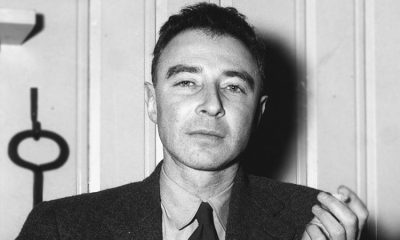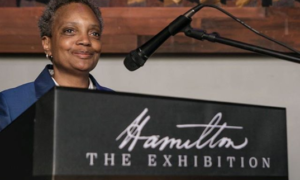Scientists
Walter A. Shewhart

Walter A. Shewhart Biography
Walter Andrew Shewhart (March 18, 1891 – March 11, 1967) was an American physicist, engineer, and statistician, sometimes known as the father of statistical quality control and also related to the Shewhart cycle. He was born in New Canton, Illinois, United States. His father was Anton Shewhart and his mother Barney Shewhart. It was not easy to enter higher education for Walter. Anyway, with his passion for studying, he managed to acquire a great knowledge of science. This impetus was the key to enter the University of Illinois, and surprisingly, something that was not within his plans, he received his doctorate in physics at the University of California at Berkeley in 1917.
Upon receiving his doctorate, he taught at the universities of Illinois and California. He was briefly in charge of the Department of Physics at the Wisconsin Normal School in LaCrosse. He was a fan of libraries or anything that could provide him with unknown information. Learning was something he found fascinating. This was perhaps an element of Shewhart’s success. Intelligently and strategically he cultivated these sources and obtained from the information that he put into practice. For this reason, he received several recognitions throughout his life, one of them, very significant for him, was the one published in Industrial Quality Control in August 1967.
Shewhart worked for many years as an engineer at Western Electric. He left this position in 1924 and was hired in the laboratories of Bell Telephone, where he held various positions, one of them, as a member of the technical staff. In this important company, he was from 1925 to 1956.
Due to a task that the Bell Telephone engineers had to take on from higher orders, Shewhart and his team worked to improve the reliability of Bell Telephone’s transmission systems. Because the installation of the amplifiers and other equipment was done underground, this generated many faults and, obviously, a lot of money invested in repairs. Bell Telephone had already realized the importance of renewing the manufacturing process. So, Shewhart understood that the continuous process of adjustments as a response to the reported failures increased the variations in the deterioration of the quality of the equipment.
In 1924, according to his analyzes, and a greater deepening of them, he introduced the control chart as a tool to distinguish between the variations in the faults and the quality of the equipment. It is currently known as a schematic control diagram. Shewhart emphasized in the importance of predicting future results and managing it economically, to keep the variations controlled. Towards the end of the 1930s, Shewhart’s interests took on new horizons, going beyond Industrial Quality, focusing on broader concepts, such as statistical inference.
In 1932, when he was invited to give a lecture in England under the auspices of Karl Pearson he received many critiques. At that moment, his ideas turned out to be uninteresting for the circle belonging to the English statistical tradition. Despite this, he continued to work on his statistical concept of tolerance intervals and try to propose his rules for the presentation of data. He launched his book Statistical Method from the Viewpoint of Quality Control (1939). The book answers the following research question: What can the statistical practice and science, in general, learn from the experience of industrial quality control?
He taught Quality Control and Applied Statistics at the University of London, as well as at the Stevens Institute of Technology, and at the Graduate School of the United States Department of Agriculture. His assertive teaching style led him to academic institutions in India. After this, he obtained other important positions, such as a member of the Visiting Committee of the Department of Social Relations of Harvard, honorary professor in Rutgers, and member of the Advisory Committee of the Department of Mathematics in Princeton, United States.
For his effective method was also hired for official services, Shewhart served: the United States Department of War, the United Nations and the government of India. He had an important influence on the National Research Council and the International Statistical Institute. He was also an honorary member of the Royal Statistical Society of England, and while in India he collaborated with the Calcutta Statistical Association. When he came back to the United States he was hired as the director of the Institute of Mathematical Statistics and participated in the American Association for the Advancement of Science and in the Econometric Society, the International Statistical Institute and the New York Academy of Sciences.
Your work in the engineering was parallel to his position as editor of the Mathematical Statistics Series published by John Wiley & Sons, with the necessary knowledge in this field and the alliances achieved, he published in the Bell System Technical Journal.
The American Society for Testing Materials published the importance of his studies to increase the production during the Second World War in the American war standards Z1.1-1941, Z1.2-1941 and Z1.3-1942. Additionally, he published articles in professional journals, although many of his writings did not come from Bell Laboratories. One of them was the historical memorandum of May 16, 1924, in which he proposed the control charts to his superiors.
Shewhart’s proposal in the field of statistics was a resounding innovation because he endowed this science with a strong operational vision. Shewhart based his works on the writings of the pragmatic philosopher Clarence Irving Lewis. Also, the book Mind and the World Order by Lewis was very important in his training and intellectual development.
Shewhart passed away in Troy Hills, New Jersey, on March 11, 1967.

History
Robert Oppenheimer
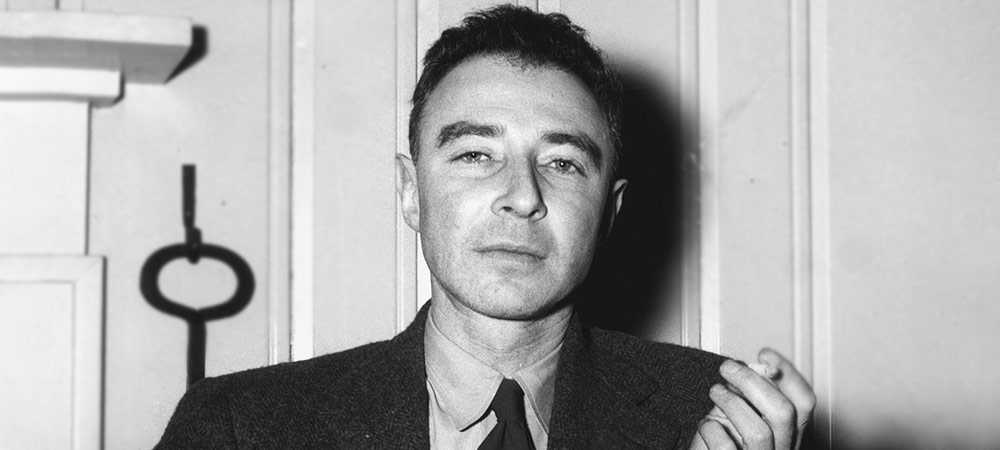
Robert Oppenheimer Biography
Julius Robert Oppenheimer (April 22, 1904 – February 18, 1967) was a physicist widely acknowledged as the father of atomic bomb. He was born in New York City, United States. Oppenheimer is renowned for his pivotal role in the development of the Manhattan Project during World War II, which culminated in the creation of the first atomic bombs.
Early years
Robert Oppenheimer was an American theoretical physicist, scientist, and university professor. He was the son of German-born Julius S. Oppenheimer and artist Ella Friedman. Coming from a wealthy and educated family in New York, his father was a Jewish owner of a significant fortune amassed through his textile factory. This allowed Oppenheimer to enjoy certain comforts and attend the best schools in the city.
In this regard, he was educated at the Ethical Culture School in New York, where he excelled as the top student, with some teachers even asserting that he was better than many of them. Upon graduating from school, he enrolled at Harvard University, where he stood out in all areas, from chemistry to Eastern philosophy, Greek, and Latin, completing his studies at the age of 21.
Career
After some time, Robert Oppenheimer decided to delve into the world of physics, capitalizing on both his aptitude for the subject and its burgeoning prominence across Europe. He moved to England, where he worked with Ernest Rutherford and J. J. Thomson. Alongside these two great scientists, he felt somewhat inadequate, as he believed his performance did not meet the required standards. However, Oppenheimer did not give up.
With the passage of time, he learned from his mentors, and by 1925, feeling more adapted, he began researching atomic energy and secondary-atomic particle energy processes at the Cavendish Laboratory.
A year later, he was at the University of Göttingen, collaborating with Max Born to develop his classical contribution to molecular quantum theory, known in physics as the “Born-Oppenheimer method”. He returned to his home country to teach theoretical physics at the California Institute of Technology and the University of Berkeley between 1929 and 1942. Oppenheimer was a highly political person. Therefore, in the 1930s, he decided to align himself with communist students to support the Republic during the Spanish Civil War, but certain actions led to the demise of his sympathy for the Communist Party.
Contribution to the Manhattan Project
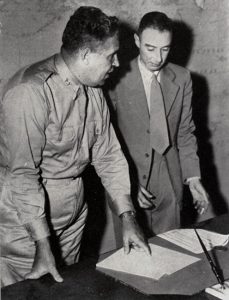
General Leslie Groves alongside Oppenheimer in the development of the Manhattan Project (Circa 1944)
The civil and political situation in Europe was becoming increasingly dangerous. By 1939, Albert Einstein and Leo Szilard warned the U.S. government about the dangers of nuclear energy falling into the hands of the Nazis. In response, President Franklin Roosevelt initiated the project for creating the atomic bomb, which was initially under military control, led by General Leslie Groves, an engineer known for overseeing construction projects, including the Pentagon. Later, Oppenheimer was brought on board to manage the administration of the project, which culminated in the construction of the atomic bomb by 1945.
Oppenheimer’s most significant contribution to the Manhattan Project was his leadership and effective coordination among diverse teams of scientists. His vision and problem-solving skills were crucial in overcoming the scientific and technological challenges involved in building an atomic bomb. He supervised the design and testing of the first atomic bombs, including the successful detonation of the plutonium bomb at the Trinity test site in New Mexico on July 16, 1945.
This American physicist had the support of many prominent figures in science, such as the great scientist Werner Heisenberg, Erwin Schrödinger, Max Born, Wolfgang Pauli, Paul Dirac, and Enrico Fermi, with whom he also developed close friendships. The work carried out by these scientists on quantum physics provided significant support for his own research. He gained valuable insights into quantum and relativistic physics, which kept him abreast of new scientific developments. He made contributions to the application of quantum theory to the concept of electron spin.
In his role as the director of the Institute for Advanced Study in Princeton, he fostered discussion and research in quantum and relativistic physics. In 1953, his past ties with the Communist Party led to certain defamation issues. As a result, he was called to a security hearing where the accusation was dismissed, but his access to military secrets was still prohibited. One of the institutions that attacked the scientist the most was the Federation of American Scientists. Oppenheimer was humiliated, and his communications were monitored. Nine years later, President John F. Kennedy, in an effort to rectify this mistake, awarded him the Enrico Fermi Award, granted by the Atomic Energy Commission, which he received from President Johnson himself.
“Now I Am Become Death, the Destroyer of Worlds”.
Oppenheimer, confessed to President Harry Truman, that he was not entirely comfortable with the fate of the atomic bomb. After some time, the Cold War erupted, and the Soviet Union announced its possession of an atomic weapon. In response, the United States decided to develop an even more powerful weapon. They approached Oppenheimer to lead the Atomic Energy Commission, but he declined the offer, resulting in his removal from the position. However, he remained the director at the Institute for Advanced Study, thanks to the support given by Einstein, Von Neumann, and Bohr.
After this event, his life took a different turn as he decided to distance himself from the laboratories and leaned towards writing about the studies conducted throughout his scientific career. Notable works include “Science and the Common Understanding” (1954) and a book related to electrodynamics (published posthumously in 1970). In the aftermath of the events in Japan and the grave consequences the atomic bomb had on humanity, he made several proposals aimed at internationally regulating the use of atomic energy to ensure peace.
He staunchly opposed the creation of the hydrogen bomb. However, despite his efforts and those of the General Advisory Committee of the Atomic Energy Commission, its development continued. Disheartened, Oppenheimer made the decision to retire from Princeton in 1966. A year later, on February 18, 1967, he passed away from throat cancer.
Filmography
Visual works inspired by Robert Oppenheimer:
- “Fat Man and Little Boy” (1989): Oppenheimer was portrayed by Dwight Schultz in this film.
- “One Day” (1989): The scientist was portrayed by David Strathairn.
- “Oppenheimer” (2023): The biography of Julius Robert Oppenheimer was brought to the screen in this movie, based on the biographical work “American Prometheus” by author Kai Bird. The character of Julius Robert Oppenheimer was played by Cillian Murphy and directed by Christopher Nolan.
Scientists
Friedlieb Ferdinand Runge
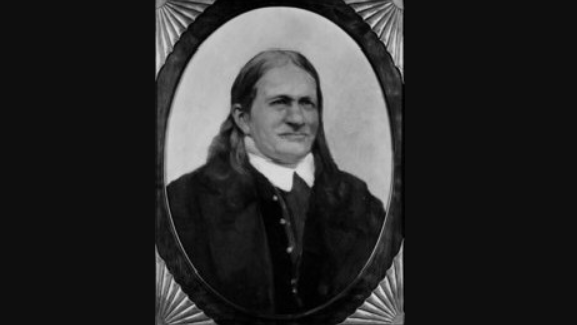
Friedlieb Ferdinand Runge Biography
Friedlieb Ferdinand Runge (February 8, 1794 – March 25, 1867) was born in Hamburg, Germany. Chemist and pharmacist, famous for discovering caffeine in 1820, after being encouraged to study coffee beans by renowned German scientist Johann Wolfgang Goethe.
Runge is considered one of the most prominent scientists of the 19th century. However, he was little appreciated at the time. Among his most outstanding findings are: atropine, aniline, phenol, quinine, pyrrole, and tar distilled dyes, as well as chromatography. Throughout his academic career he served as a professor at the universities of Berlin and Wroclaw, subsequently worked for a pharmaceutical company in which he sought financial support to make his discoveries profitable. However, his efforts were ignored.
Studies and beginnings
He was born into a humble family that lived in Billwerder (Hamburg). His father was a Lutheran pastor. He studied at the primary school located in Schiffbeck, after a few years he began to be interested in science, a passion he has cultivated since then. After carrying out his basic academic training, he chose as a profession the pharmaceutical company, an area in which she quickly excelled, thus earning her own livelihood since she was young. At the beginning of the 1810s, he observed how a drop of belladonna increased the diameter of the pupil of the eye in a cat, thus discovering the mydriatic effect of the plant. In 1816, he entered the University of Berlin, where he studied medicine, two years later he continued his training in Göttingen, the city in which he carried out his practices in chemistry.
Career
At the end of his formative period in Göttingen, he moved to Jena, where shortly thereafter he obtained his Ph.D. in Physics, after presenting an essay in which he delved into the poisoning with Belan and Belladonna. At that time he had as a Professor of Chemistry Johann Wolfgang Döbereiner, a renowned German chemist who invited Johann Wolfgang Goethe to observe Runge’s discovery about the effect of belladonna on the pupil, for this the young scientist presented himself with a cat, which had pupils of different diameter, impressed by his discovery, Goethe gave him a box of coffee beans and asked him to analyze the chemical composition of coffee, research that resulted in the discovery of caffeine in 1820.
Before his great discovery, he returned to Berlin, where he began to work as a university professor while continuing to work as a pharmacist. During this period, he lived with the famous physicist Johann Christian Poggendorf who was his school partner in Schiffbeck. Together, they turned their home into a laboratory, where they conducted numerous experiments. At the beginning of the 1820s, he carried out various studies related to indigo dye and its chemical composition (salts and metal oxides), information that was part of his doctoral thesis. He later published Recent phytochemical discoveries, a work in which he delved into this area of science, seeking to establish scientific phytochemistry.
During his stay in Berlin, he began teaching about plants and technical chemistry. In 1823, he traveled to Paris to continue studying, later moved to Wroclaw for a short time, then visited Switzerland, France, Germany, Holland, and England. After traveling through Europe, Runge settled in Wroclaw, a city where he served as an associate professor at the Faculty of Philosophy at the University of Wroclaw, without receiving a fixed salary. In the course of these years he gave various conferences and focused on his research, with the goal of carrying out chemical studies that had a practical benefit; a short time later he left his job at the university to devote himself fully to research. In 1832 he was hired to direct the technical management of a chemical factory sponsored by the Prussian government, located in Oranienburg.
While working at the factory, he discovered the aniline and phenol by distilling the coal tar, aware of the entrepreneurial potential of this discovery, he sought the support of the company. However, the factory director rejected the proposals proposed by Runge. For this discovery, he was exalted at the Industrial Congress in London and was later awarded in Berlin. For this same period, he investigated the intensities of the colors through the filter paper. In 1852 he was fired after being accused of working for a short time, an accusation that was linked to the academic activity of the scientist, who at this time focused on his studies and published about seven books. Runge lived for a short time of the pension of the company, which stopped arriving after the death of the owner.
The last years of his life faced serious financial problems, falling into oblivion. However, he continued to carry out research on practical chemistry, produced artificial fertilizers and wrote several books, including maintenance letters, a book in which he gave advice on the domestic environment, such as preparations, recipes, and Tricks to eliminate stains and odors. After a long academic career the scientist died on March 25, 1867, in Oranienburg, was buried in the municipal cemetery.
Although his studies and approaches were little appreciated in his time, currently Runge, he is considered one of the most relevant scientists of the nineteenth century.
Friedlieb Ferdinand Runge doodle
Google honored the scientist on the 225th anniversary of his birth, becoming the center of the Doodle on February 8th. In the image, the scientist is seen surrounded by his discoveries such as caffeine and the mydriatic effect of belladonna on the cat’s eyes.
physicist
Anders Celsius
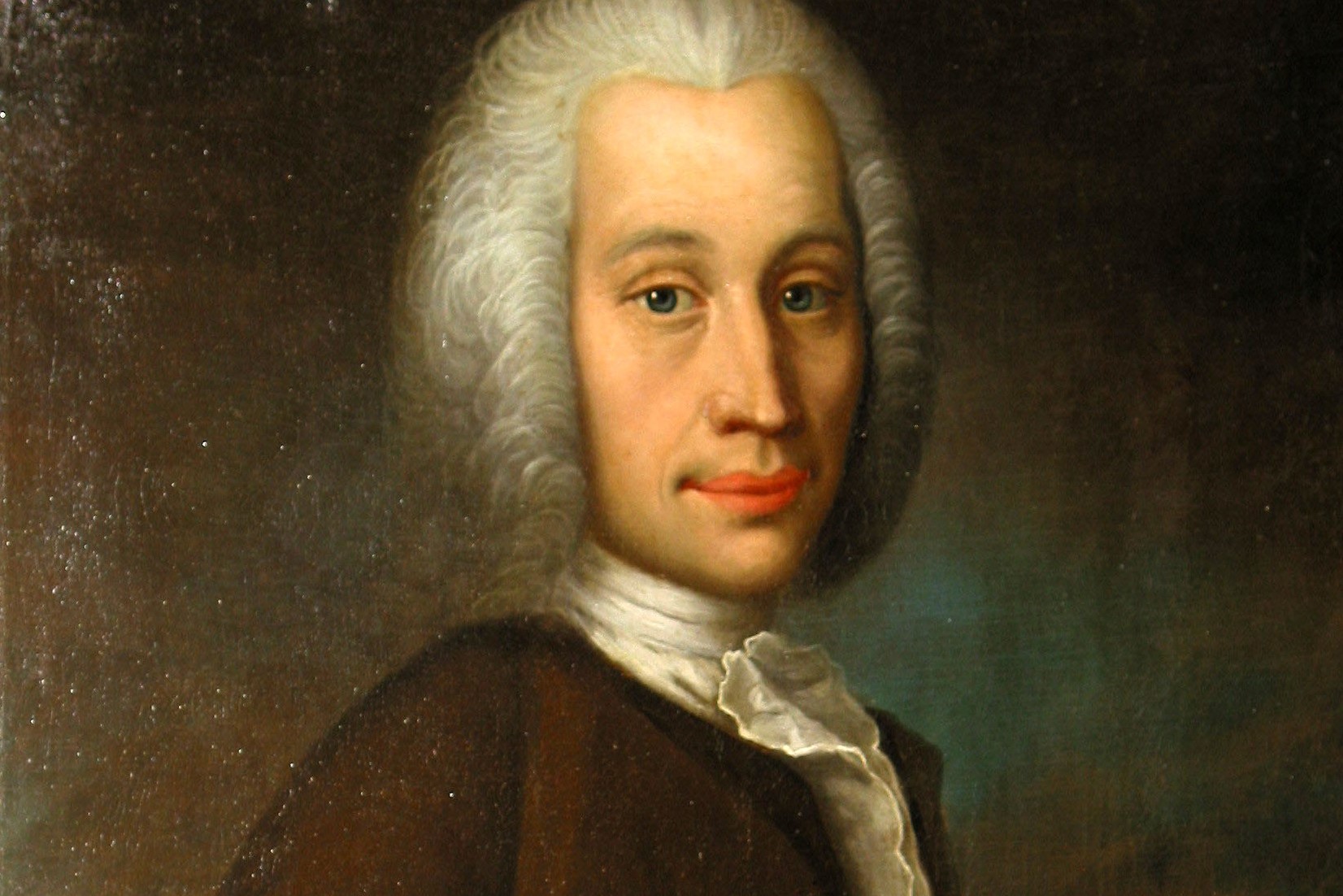
Anders Celsius biography
Anders Celsius (November 27, 1701 – April 25, 1744) was born in Uppsala, Sweden. Physicist and astronomer, creator of the centesimal scale of the thermometer known as Grade Celsius (° C), which replaced the scale proposed by the German scientist, Daniel Gabriel Fahrenheit in 1724. Celsius, like many other scientists of his day, had a careful education that covered various fields. However, he focused fully on physics and astronomy, areas in which he excelled being considered one of the most prominent scientists of the 18th century. Throughout his academic career, he served as a professor of astronomy at the University of Uppsala. He was also one of the supervisors of the construction of the Uppsala Observatory, which he directed for several years.
He was born in a family belonging to the academic circle of the country. His father was Nils Celsius, an outstanding astronomer, a descendant of Magnus Celsius, a renowned mathematician and astronomer, who deciphered the runes of Staveless. His uncle Olof Celsius was the creator of a botanical school in Uppsala and a professor famous for his knowledge about mosses. On the maternal side, Celsius is related to Anders Spole, an astronomer and mathematician who served as a professor at Upsala University.
Career
After completing his studies he began to practice as a professor at the University of Uppsala (1730-1744) for 14 years. During this time, he conducted various investigations related to the field of astronomy. In the early years of the 1730s, he undertook a trip through Europe in which he visited the most outstanding astronomical observatories of the time, arriving to work with renowned astronomers. In 1733, he published a compilation of 316 observations of northern lights, in which he speculated about their relationship with magnetism.
Between 1736 and 1737 he was part of the group of researchers that accompanied the French astronomer Pierre Louis Maupertuis, on his journey through the northern region of Sweden where he sought to measure the length of the meridian near the pole, to compare it with the measurement made in Peru near to Ecuador. This research was known as the Lapland Expedition, which sought to demonstrate that Newton’s predictions about the flattening of the earth at the poles were correct, a conclusion they reached after the measurements. The calculations and conclusions of the expedition were included in La Figure de la Terre, a book published by Maupertuis in 1738.
For his participation in the expedition, Celsius was rewarded as an annual pension of 1,000 pounds, economic income that allowed him to invest in the construction of the Uppsala Observatory, which was one of the most modern of his time, after the opening he was appointed director of the observatory (1740). During the following years, he made various geographical measures used in the Swedish map. In the 1740s he carried out the studies in relation to the temperature scale by which he is known.
By 1742, he proposed to the Swedish academy a new way of measuring the temperature based on two established points: 0 indicated the boiling point of water and 100 represented the degree of freezing; which meant that as the heat increased the temperature dropped. This proposal would replace the scale created by Daniel Gabriel Fahrenheit in 1724, known as Fahrenheit Grade (° F), which ranged from 32 to 212 degrees.
Explained the operation of the scale, Celsius, created the centesimal scale that ranged from 0 to 100 degrees and invented the mercury thermometer. After three years, the scale was reversed by the Swedish scientist Karl von Linné, a modification with which it has been used since then. The scale of the Swedish scientist was called in the first years, Swedish thermometer, a term used by the scientific community of the time, however, since the 19th century it began to be called Celsius thermometer, in homage to its creator, it has also been known as Grade Celsius (° C). The following century this was replaced by the Kelvin scale (Kelvin K Grade), created in 1848 by William Thomson (Lord Kelvin).
The contributions of Celsius in the field of science are not reduced to scale, he was also the first scientist to raise the relationship between the phenomenon of the auroras and magnetism, also made numerous observations of this phenomenon that allowed his study years late. Another contribution of this scientist in the astronomical field was his studies on eclipses and stars, which included a detailed catalog of 300 stars and their system. Two years after the scale was created, the Swedish scientist contracted tuberculosis, a disease that deteriorated his health in a short time, passing away on April 25th, 1744, at the age of 43.
Doctor
Willem Einthoven
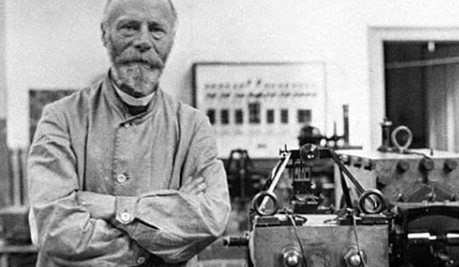
Willem Einthoven Biography
Willem Einthoven (May 21, 1860 – September 28, 1927) Physiologist and physician. Nobel Prize in Medicine in 1924. He was born in Semarang, Indonesia. He is well known for his contributions to the development of the electrocardiograph and its clinical application. His father died when they lived in Java, so Willem moved to the University of Utrecht to study medicine.
After finishing his studies he obtained the position of professor at the University of Leiden to deal with the positions of physiology and histology. He took the opportunity to advance an important work in the field of research. He quickly showed himself as a reputable scientist, participated in numerous international scientific forums and the best thing is that by managing several languages he could communicate his ideas faithfully without the need for translators.
For several years he experimented with the rope galvanometer and its utility for the registration of cardiac potentials, and the results obtained were published in an article in the year 1901. Five years later, he masterfully described the clinical applications of the electrocardiogram in Telecardiogramme (1906). After that, he published another article that laid the foundations for the development of this important tool in cardiology analysis. His investigative work was carried out simultaneously with his work as a professor.
Thanks to his work, the galvanometer was used to measure the differences in electrical potential during systolic and diastolic heart contractions and reproduce them graphically. This procedure is known as an electrocardiogram.
Later, he was interested in analyzing how healthy hearts worked and then defining a reference frame, through which attention was paid to the deviations caused by the disease. To sum up, he revolutionized the study, diagnosis, and treatment of cardiac pathologies. In his honor, the lunar crater Einthoven bears his name.
Doctor
Lucy Wills

Lucy Wills Biography
Lucy Wills (May 10, 1888 – 1964) hematologist and botany. She was born in Sutton Coldfield, United Kingdom. Her family enjoyed a good social and economic position. Therefore, she was able to study at Cheltenham Ladies ’College, an educational institute that offered high educational standards in teaching. Then, she studied Botany and Geology in 1911 but did not receive a Cambridge graduate degree until 1928, when Cambridge began granting degrees to women.
By that time, Wills had admirably managed to graduate as a doctor at the London Royal Free Hospital School of Medicine for Women. From the beginning, he knew that he would devote her knowledge to research and teaching in the Department of Pathological Chemistry of the same center in London. For the year 1928 Margaret Balfour contacted her. For several years she served as chief of pathology until her retirement in 1947.
After her retirement, she worked in South Africa and Fiji studying the effects of nutrition on health. During the last ten years of her life, she was a member of the local government for Chelsea. She started working on macrocytic anemia of pregnancy that primarily affects pregnant women in the tropics, with inadequate diets, this work was developed in several areas of India.
This woman is owed several contributions, such as discovering a nutritional factor in yeast that prevents and cures this disorder: the Wills factor or folate, the natural form of folic acid. In that sense, in the year 1930, she showed that anemia could be reversed with brewer’s yeast, which contains folate.
As part of a recognition of her work and the advancement of medicine, on May 10, 2019, the 131st anniversary of her birth, the Google search engine commemorated Wills with a Doodle available for North America, parts of South America and Europe, Israel, India, and New Zealand. Her knowledge changed the face of prenatal preventive care for women around the world.
WORKS
- Studies on blood and urinary chemistry during pregnancy: blood sugar curves.
- Studies in pernicious anemia of pregnancy (1930). This research has 4 parts.
- Treatment of “pernicious anemia” of pregnancy and “tropical anemia” with special reference to yeast extract as a healing agent.
- The nature of the hemopoietic factor in Marmite.
- A new factor in the production and cure of certain macrocytic anemias.
- Tropical macrocytic anemia: its relationship with pernicious anemia.
